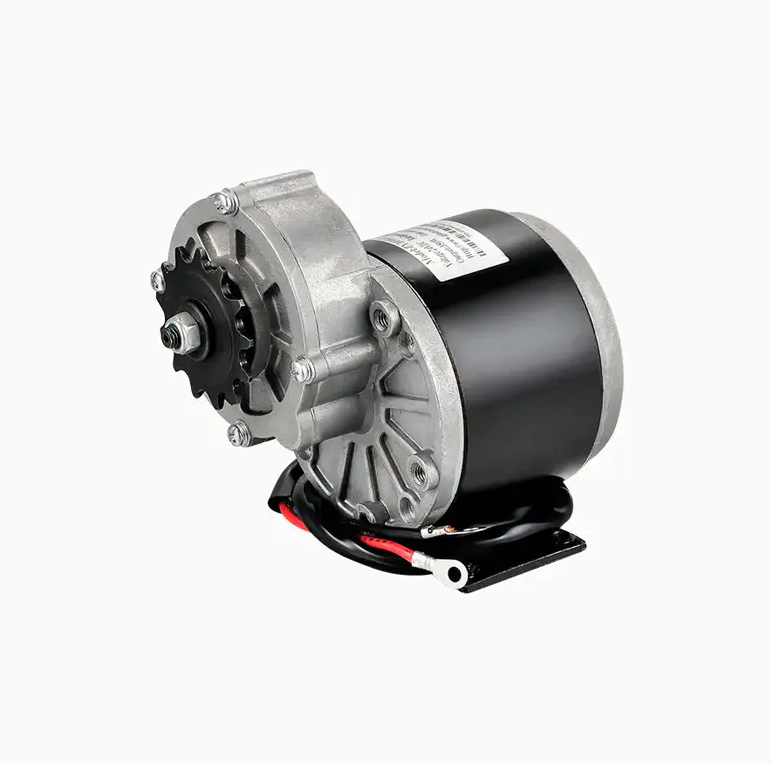Temperature rise is a common challenge in the operation of DC brushed motors, impacting their performance, efficiency, and lifespan. Excessive heat generation can lead to insulation breakdown, increased wear of brushes and commutators, and even permanent damage to the motor. Addressing temperature rise effectively is essential to ensure the reliable and long-lasting operation of a DC brushed motor in various applications.
The primary source of heat in a DC brushed motor comes from electrical losses, including resistance in the windings and friction between the brushes and the commutator. When the motor carries a heavy load or runs continuously at high speeds, these losses increase, generating more heat inside the motor housing. Without proper thermal management, this heat accumulates, raising the internal temperature and potentially causing serious issues.
One of the most straightforward ways to manage temperature rise is through effective cooling. Many DC brushed motors are designed with built-in cooling features such as ventilation slots, external fans, or heat sinks that help dissipate heat away from critical components. Ensuring that these cooling mechanisms are not obstructed and are operating efficiently can significantly reduce temperature buildup. In some industrial settings, additional forced-air cooling or liquid cooling systems are implemented to keep the motor within safe temperature limits.
Proper motor sizing also plays a crucial role in temperature control. Selecting a DC brushed motor with an appropriate power rating and torque capacity for the intended application helps avoid excessive current draw, which directly correlates to heat generation. Oversized motors operating under light loads or undersized motors working beyond their capacity both lead to inefficient operation and higher thermal stress. Careful matching of motor specifications with load requirements ensures smoother operation and better temperature management.
Electrical control methods such as pulse width modulation (PWM) speed controllers help reduce heat by optimizing the motor’s power consumption. By controlling voltage and current more precisely, PWM controllers prevent the motor from drawing excessive current and limit unnecessary heat production. These controllers also allow smoother acceleration and deceleration, reducing mechanical stress and heat from friction.
Lubrication and maintenance are equally important for managing temperature rise. Properly lubricated bearings reduce mechanical friction, lowering the heat generated by moving parts. Regular inspection and replacement of worn brushes and commutators also minimize electrical resistance and sparking, which contribute to heat buildup. Neglecting maintenance can accelerate motor aging and cause overheating.
In addition to these practical measures, some advanced materials and design improvements are employed to enhance heat resistance in DC brushed motors. For instance, using high-temperature insulation materials on windings and improved brush materials can increase the motor’s tolerance to thermal stress. These innovations contribute to safer operation under demanding conditions.
In summary, solving temperature rise issues in DC brushed motors involves a combination of adequate cooling, proper motor sizing, effective electrical control, regular maintenance, and the use of durable materials. Addressing these factors not only prevents overheating but also improves overall motor efficiency and extends its operational lifespan. Understanding and implementing these solutions allows users to maximize the reliability and performance of DC brushed motors across various applications.
Key Features:
1. Permanent magnet design: The motor incorporates permanent magnets that generate a strong magnetic field, resulting in higher torque density and improved overall efficiency.
2. Brushed technology: This motor utilizes traditional brushed technology, making it easier to maintain and repair. It also ensures smooth communication, providing reliable and consistent performance.
3. Compact and lightweight: The compact and lightweight design of the motor allows for easy integration into electric scooters, without compromising on performance or functionality.
4. Wide speed range: The motor offers a wide speed range, allowing riders to choose their preferred speed for different road conditions and riding styles.
5. Long life span: DC Brush Motor is built to last, with a robust construction and high-quality materials. It can withstand rigorous use and offers a long service life.

